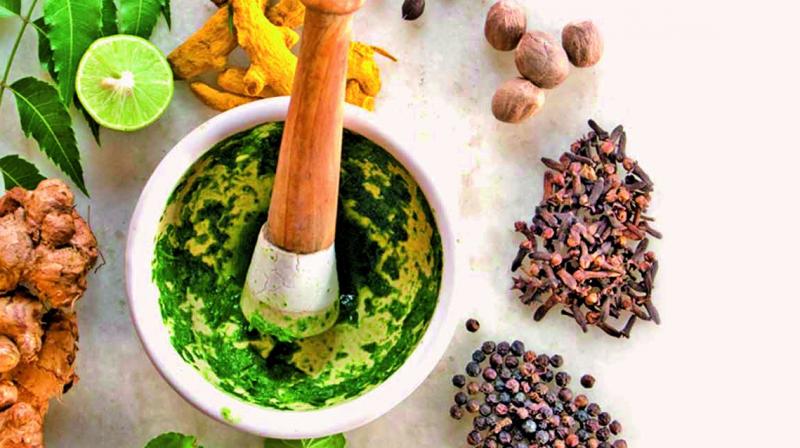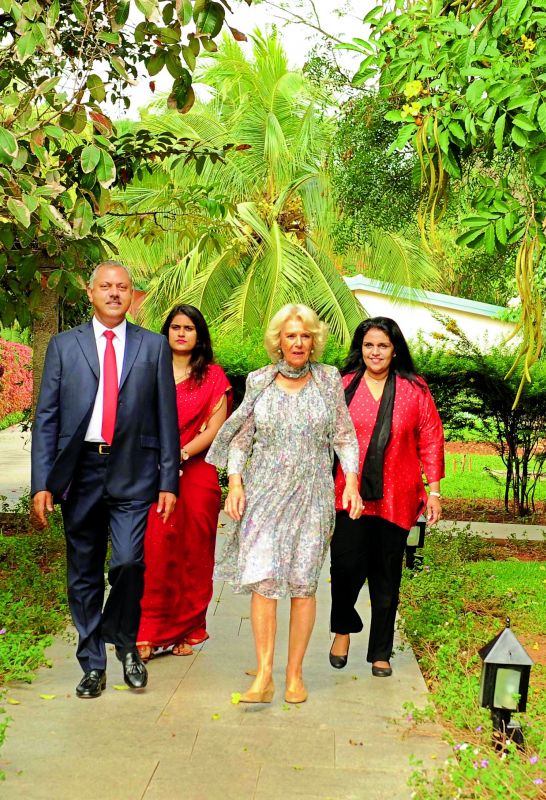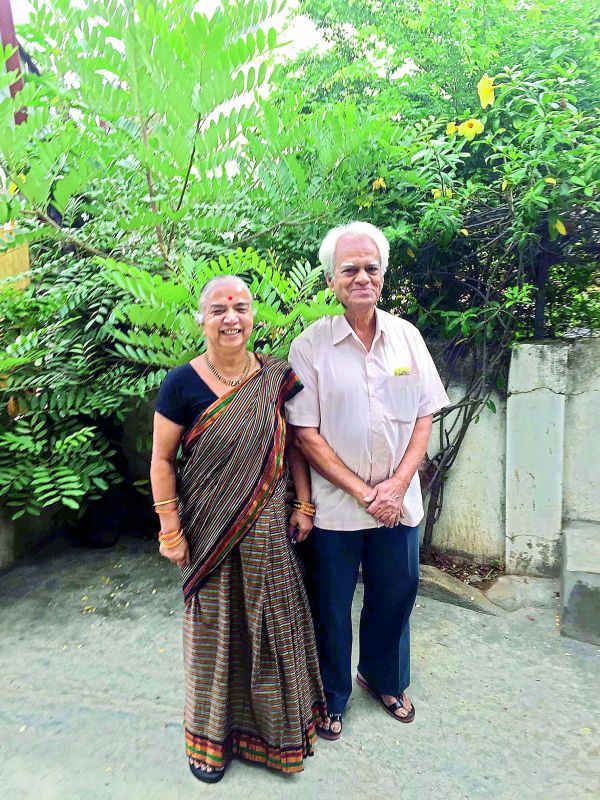Ayushman Bhava
What if we could live healthier lives with modern medicine being complimented by alternative therapies?

If Sir Tim Berners Lee had kept the World Wide Web a secret, or charged money for it, we all would not be the all-knowing googlepedias we are. In the same breath, if illness and cures could see a meeting of modern medicine with alternative therapies, we’d be much healthier, and probably richer! Imagine if researcher and pharmacologist Tu Youyou, the first Chinese woman to win a Nobel Prize, had not searched the annals of traditional Chinese medicine to create an anti-malaria medicine? We’d still be searching for cures. But in India, that openness is mostly absent. Young Ayurvedic doctor Prasan Shankar has mulled over this conundrum — about the close-mindedness of healing. Even as society is realising the fallacy of following only medicine, there are instances where traditional knowledge is being opted for. For chronic issues and to treat illness-related side-effects, especially in cancer. Prince Charles’ wife, Camilla Parker-Bowles, the Duchess of Cornwall, had a successful holistic healing session in Bengaluru’s Dr Issac Mathai’s Soukya Holistic Health Centre in Whitefield. She underwent ayurveda and naturopathy with yoga, mud therapy and hydro-therapy. Many atheletes in the north follow the guidance of a vaid for fractures and muscle tears. Recently, former Sri Lankan captain Sanath Jayasuriya sought treatment of his chronic and acute knee ailments from a nature healer, Dr Prakash Tata from MP’s Chhindwara, who had earlier treated former cricketer Azharuddin, Bollywood celebrities and other sportspersons. It was reported that he will be using medicinal remedies from some inaccessible forests.
In the past too, pop star Madonna, model Naomi Campbell, actor Demi Moore and even Steve Jobs had turned to traditional wisdom from India’s ancient sciences for relief and cure. Actor Gwyneth Paltrow too came out in support of acupuncture. There were unconfirmed reports that Irrfan Khan might consult Ayurveda doctor Vaidya Balendu Prakash, who treated Steve Jobs. The Foundation for Revitalisation of Local Health Traditions and IAIM Healthcare Center in Bengaluru treated a former Singapore foreign minister for Parkinsons. The Joshis, doctors in botany in Bengaluru, have been treating first and second stage cancer, and chemotherapy-induced ill health with a Central American tree called Simarouba.

Camilla Parker Bowles.
Amul S. Bahl, of Godsownstore in Delhi, offers cold pressed nanocellopathy oils to treat chronic forms of illness, even cancer. There is sujok, acupuncture and acupressure which have been used for muscular-skeletal problems. Wouldn’t it be brilliant if this dire need to have a qualitative life blends all this healing wisdom for a holistic approach to good health, with medicine being foremost and others complimenting it? Padma Shri Darshan Shankar’s FRLHT and IAIM offer treatment for muscular skeletal disorders, spinal column-based pains, spondylitis, arthititis, strokes, paralysis, Parkinsons, infertility, cancer, fibromyalgia, stroke, bells palsy, celebral palsy, muscular dystrophy, etc. The Ayurvedic process, they feel, goes deeper into cause than just effect. Shankar, explains, “The science of allopathy has a symptomatic approach. And therefore, it is successful in acute symptoms. I was recently at Harvard Medical School and was surprised to see that students are studying the effects of yoga in brain mind labs, and are able to see positive changes occurring in the brain, even genomic changes. If in a complete non-drug therapy like yoga one can see changes in neurological and physiological aspects, imagine what we are overlooking in traditional wisdom like Ayurveda? Our institute lab has seen improvement in memory, dementia, Parkinsons.”

Shantha and Shyamsundar Joshi
Side-effects are also a huge deterrant when it comes to modern medicine, which sees more people opt for traditional medicine. A reputed doctor feels that medicine and other forms of alternative treatment, both have side effects. Darshan Shankar adds, “The difference between the side-effects of modern medicine versus Ayurveda is that in medicine, a molecule is used to take out an atom. In essence, it’s like uranium, you can blow up the whole world using a form of it which otherwise lies quietly in the earth. Anaesthesia comes from Cannabis, and you can smoke it, chew it, and not be in danger of getting anaesthised, but morphine is one molecule of cannabis which can anaesthetise. In its whole form, the whole behaves better than the part, the part’s side effects are larger. Though it is absurd to say there are no side effects, but degree differs.” A leading spine surgeon put its succinctly, “My concern is that there is poor regulation of Ayurvedic meds and poor quality control. Side effects have not been studied well. Such treatments are known to use heavy metals which are highly toxic. For chronic cases some alternative treatments help, or don’t make matters worse. But one should be wary of quacks. Of course, in acute situations, medicine works best.”
Complimenting health: Medicine and Traditional
In a first, a high powered committee is digging deeper into traditional forms of healing that can compliment medical treatment for a holistic approach to health. India’s history has a rich tradition of healing that has mostly existed in the sidelines. What if we were to take traditional healing — Ayurveda, Homeopathy, Yoga, Acupuncture, and create a meeting ground where such treatment compliments modern medicine? Dr Vishal Rao, a medical oncologist is on a high powered committee in Karnataka working towards complimenting medical treatment with holistic traditional forms. Darshan Shankar’s 100-bed Ayurvedic hospital has a doctor on board. Yet, it is far from an ideal situation. Lack of funds, no proper studies and no dialogue between the medical fraternity and alternative healers has been the scenario. Altruistic in nature, with cancer incidence rising, today disease is the norm, and being healthy a misnorm. Addressing cures and allieviating symptoms is the key. And most alternative therapies insist that one must continue medical treatment as well. Dr Vishal Rao says, “The high power committee for yoga and other therapies formed by the government is exploring how modern medicine works with other therapies complimenting it for overall health. This debate of alternative versus complimentary opens new vistas. One should be aware that 100 per cent cure and zero percent side-effects is a Utopian dream. And such claims target vulnerable patients — surely somebody is lying. I had a recent case of a stage 2 cancer that became stage 4 as treatment was delayed due to such remedies. There is no magic bullet and people should stop cheating others with false hope.
BALANCING DOSHAS
Kapha (phlegm) type
Recommendation
Consume light, dry warm food
Avoid sweet, sour, cold, oily food
Include spices like black pepper, turmeric, and ginger in day-to-day life
Have small meals and finish all meals by 6 pm
Exercise regularly
Useful herbs: Ginger, black pepper, cinnamon, cardamom, guggulu, ashwagandha and mustard
Pitta (acidic) type Recommendation
Massage with coconut, sandalwood or sesame oil
Avoid alcohol, pungent, sour, salty, hot, spicy food
n Consume plenty of water and fruit juices (grapes, melon, plums
etc)
Practice meditation and stress reducing techniques
Moderate yoga
Avoid excessive exposure to sun
Useful herbs: shatavari,
chandana, aloe vera, vidari
Vata (Gas) type
Recommendations
Cumin, fennel, cardamom should be included in cooking
Avoid caffeine,
cold drinks, dry food, include frequent small meals
Going to bed early can help balance excess vata
Useful herbs: Aloe vera, ashwagandha, guggulu, vidari, shatavari, arjuna should be used to control vata.
Most imperative is that if there are 10 per cent cancer cells and 90 per cent good cells, this is where complimentary therapies and treatments can do more good. We have to walk together to bring about that balance.” But the word ‘alternative’ is what is not right, feels Darshan Shankar. “Health care based on traditional methods such as Ayurveda is not alternative. What we call ‘modernity’ has evolved over time through traditional wisdom. Ideally, we should have hospitals that combine therapies with medicine, as such alternative hospitals do not have emergency services. If we combine it, we can address acute conditions and surgery with our traditional strength.” The hospital in the outskirts of Bengaluru sees around 40,000 people seeking traditional treatment every year.
Nanocellopathy oils for relief
This Delhi-based IITian’s Godsownstore offers oils for pain relief. Amul S. Bahl has an M.Tech from IIT Delhi, is partner in God’sOwnStore and founder Shradha HRD Private Limited. Bahl have been addressing the need for holistic treatment with this technology that addresses pain which is a huge cause of concern in diseases like cancer, “We have developed a new technology where we are using only plant extracts in oil or liquid form. The key part of this technology is that there is nothing to ingest. It’s the first of its kind. Only three or four drops are rubbed on the affected area and the results are instant. This technology is changing the way Ayurveda works. The uniqueness is in the technology used, where a few drops are applied and rubbed for 10 seconds, called Nanocellopathy. It’s nano in form, and reaches organs quicker. These oils are synergic in nature, so when mixed with other substances, their properties are enhanced. There are positives and negatives — one might develop a skin rash, therefore these oils undergo a skin toxicology test to minimise impact. These oils are prolonging the life of cancer patients and helping in the side-effects of chemotherapy and radiation. There is definite cure for oesto-arthritis, psoriasis of the skin, thyroid,” says Bahl.
Simarouba
It’s a story that started inadvertently in 1986, a scientist visited Bhubaneswar from the University of Agricultural Sciences (GKVK) in Bengaluru and was introduced to Simarouba or lakshmi taru, which originally came from El Salvador, Central America during the 60s to solve the edible oil crisis of our nation. Dr Joshi, who was in the oil seeds section at the university, was given these Simorouba seeds to study, and it was planted at GKVK till funding depleted. Scientists Dr Shyamsundar Joshi and his wife Shantha Joshi are insistent on the plant’s cancer curing and chemotherapy alleviating qualities. But as is the case with most alternative sciences, systematic studies are few and far between. Today, they grow it, have their neighbours and patients growing it. Why has it not been brought into the mainsteam? Dr Joshi feels clinical trials have to be done over the years for a proper study. The botanist couple are more interested in spreading the word. “We will continue to spread the word…”
According to a Cancer survivor who is in remission and takes Simorouba every six months, “It has anti-oxidants and other elements that help, and I have been taking it for over two years now. It may have worked, as I also did rounds of chemotherapy and radiation, but I have no doubt that it helped build immunity and addressed the after-effects of chemo, which were really devastating.”
About its properties, Dr Joshi explains, “Simarouba has 11 medicinally important quassinoids. It is anti-lukemic and anti-cancer. The dried leaves have haemoglobin improving qualities, the bark and sticks have polyphenols and antioxidants. Once patients start taking it, they improve tremendously. For cancer — in its first and second stage, it should be taken along with medical therapy,” he says.
About studies and proof, Joshi adds, “There are some articles from long ago, based on which we started our research in 1992. In terms of examples, an easophagus cancer patient in terminal stage took Simarouba, and in a month, vomiting ceased, and in six months she started eating well. It contains flavanoids,” explains 78-year-old Joshi who swears by it for any ailment and believes it shows immediate results.
Darshan Shankar’s son Prasan Shankar adds, “People find modern treatments too linear with no laterality in approach. The approach is looking at reducing pain, not getting to the cause. A hospital that offers both traditional and allopathic is a great idea, but a relationship needs to be built… because there will be a clash of egos, and one has to be sensitisied to it. We have an MBBS doctor, Dr Bhatt, at our facility. For cancer patients, we offer rehabilitation, not treatment, after chemotherapy to restore immunity. As Ayurveda doctors, we can only give supportive care, we do not claim to give primary care.”
Many feel that the Ayush department and government are not incisive enough, and while pharma has plenty of funds, such alternative therapies are unable to make any headway, “It is killing researchers who are struggling for funding, while helplessly writing grant after grant. What India has kept aside is minor as compared to what China is using on manpower research which led to the malaria breakthrough for which they got a Nobel last year. You have to give credit to traditional Chinese medicine,” adds Prasan.
The way forward
We are a questioning society looking for studies that give us tangible results, and while allopathy and medicine, the constructive and scientific approach, has had sureshot results, traditional alternative treatments have not had it. Dr Rao is hoping to change this with the committee to make treatment a function of medicine that is complimented with such treatments. Darshan Shankar is all for this and admits that their hospital is unable to meet the demands of emergency surgery, etc though he hopes to see a day when a hospital offers both under one roof.
Worrying health
The Global Burden of Disease Study (GBD) 2013, published in The Lancet, speaks of how one in 20 (4·3 per cent) had no health problems in 2013, with a third of the world’s population (2·3 billion individuals) experiencing more than five ailments!” And Plant Nano-Cellopathy is one such possible approach. Enshrined in the Vedic essence of Aarogya, it is based on a deeper understanding of different plant oils and herbal extracts and their mutual synergy. Nanocellopathy used extracts of different medicinal plants and facilitates the body’s own healing power at the cellular or nano level.
Every day, there are reports of cancer touching lives. Relatively healthy individuals with healthy lifestyles are falling prey to this disease, and be it pesticides and pollutants, there are many reeling from its effects. Dr Sawhney, Leena, Gaurav Thakore and many others have treated themselves for cancer, and then sought the healing effects of traditional treatments, especially after the debilitating effects of chemotherapy. From Ayurvefa, homeopathy, healing oils, acupuncture and pressure, there are many treatments that are non-interventional and seek to help individuals lead more qualitative lives.

